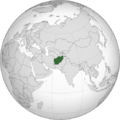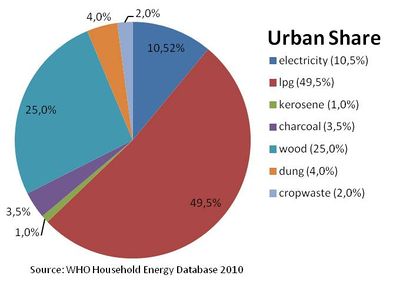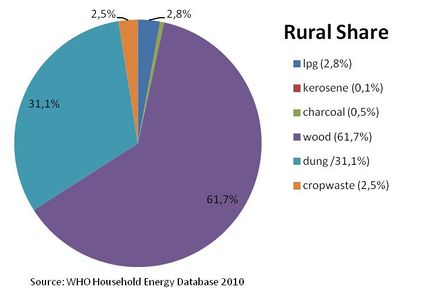Difference between revisions of "Afghanistan Energy Situation"
***** (***** | *****) |
***** (***** | *****) m |
||
| Line 2: | Line 2: | ||
|CES Country Name=Afghanistan | |CES Country Name=Afghanistan | ||
|CES Country Capital=Kabul | |CES Country Capital=Kabul | ||
| − | |CES Country Region=South Asia | + | |CES Country Region South Asia=South Asia |
|CES Country Coordinates=34.5333° N, 69.1333° E | |CES Country Coordinates=34.5333° N, 69.1333° E | ||
}} | }} | ||
| Line 83: | Line 83: | ||
<references /> | <references /> | ||
[[Afghanistan Energy Situation#toc|►Go to Top]] | [[Afghanistan Energy Situation#toc|►Go to Top]] | ||
| − | |||
| − | |||
| − | |||
Latest revision as of 18:09, 10 July 2018
Capital:
Kabul
Region:
Coordinates:
34.5333° N, 69.1333° E
Total Area (km²): It includes a country's total area, including areas under inland bodies of water and some coastal waterways.
652,860
Population: It is based on the de facto definition of population, which counts all residents regardless of legal status or citizenship--except for refugees not permanently settled in the country of asylum, who are generally considered part of the population of their country of origin.
41,128,771 (2022)
Rural Population (% of total population): It refers to people living in rural areas as defined by national statistical offices. It is calculated as the difference between total population and urban population.
73 (2022)
GDP (current US$): It is the sum of gross value added by all resident producers in the economy plus any product taxes and minus any subsidies not included in the value of the products. It is calculated without making deductions for depreciation of fabricated assets or for depletion and degradation of natural resources.
14,266,499,430 (2021)
GDP Per Capita (current US$): It is gross domestic product divided by midyear population
355.78 (2021)
Access to Electricity (% of population): It is the percentage of population with access to electricity.
97.70 (2021)
Energy Imports Net (% of energy use): It is estimated as energy use less production, both measured in oil equivalents. A negative value indicates that the country is a net exporter. Energy use refers to use of primary energy before transformation to other end-use fuels, which is equal to indigenous production plus imports and stock changes, minus exports and fuels supplied to ships and aircraft engaged in international transport.
no data
Fossil Fuel Energy Consumption (% of total): It comprises coal, oil, petroleum, and natural gas products.
no data
Geographic and Climatic Conditions
- Arid to semiarid; cold winters and hot summers
- Mean temperature (°C min/max): 4.3/19.6 [1]
- Natural gas, petroleum, coal [2]
- Land area covered by forest: 1.3%
- Forest annual rate of change: 0% [3]
Socioeconomical Situation
Income Sources
- Agriculture: 79%
- Industry: 6%
- Services: 16%
Energy Source
- Hydropower 63,7%
- fossil fuels 35,3%
Energy Consumption
Percentage of energy types used for cooking in urban areas [4]
Percentage of energy types used for cooking in rural areas. [4]
Solid Fuels
Percentage of people using solid fuels
National: >95% [5]
Solid Fuel Use Impact on Health
Total annual deaths attributable to solid fuel use: 23900 persons
Percentage of national burden of diseases attributable to solid fuel use: 4.9% [6]
Electricity Situation
Electrification rate in households in 2009:[7]
- National: 23%
- Urban: 74%
- Rural: 3%
For establishing a new electricity connection in rural Afghanistan, it usually costs about USD 1200 (plus regular payments for energy consumed).[8]
Further Information
References
- ↑ UN Data (2008): http://data.un.org/CountryProfile.aspx?crName=Afghanistan
- ↑ CIA - The World Factbook: https://www.cia.gov/library/publications/the-world-factbook/geos/af.html
- ↑ FAO (2011) The State of the World's Forest
- ↑ 4.0 4.1 WHO 2010: WHO Household Energy Database
- ↑ WHO (2006): Fuels for Life
- ↑ WHO (2006): Fuels for Life
- ↑ The National Risk and Vulnerability Assessment 2005, Kabul, Afghanistan. Cited in WHO (2009) The Energy Access Situation in developing Countries
- ↑ https://blogs.adb.org/blog/grid-solar-can-be-game-changer-electricity-access-central-asia























